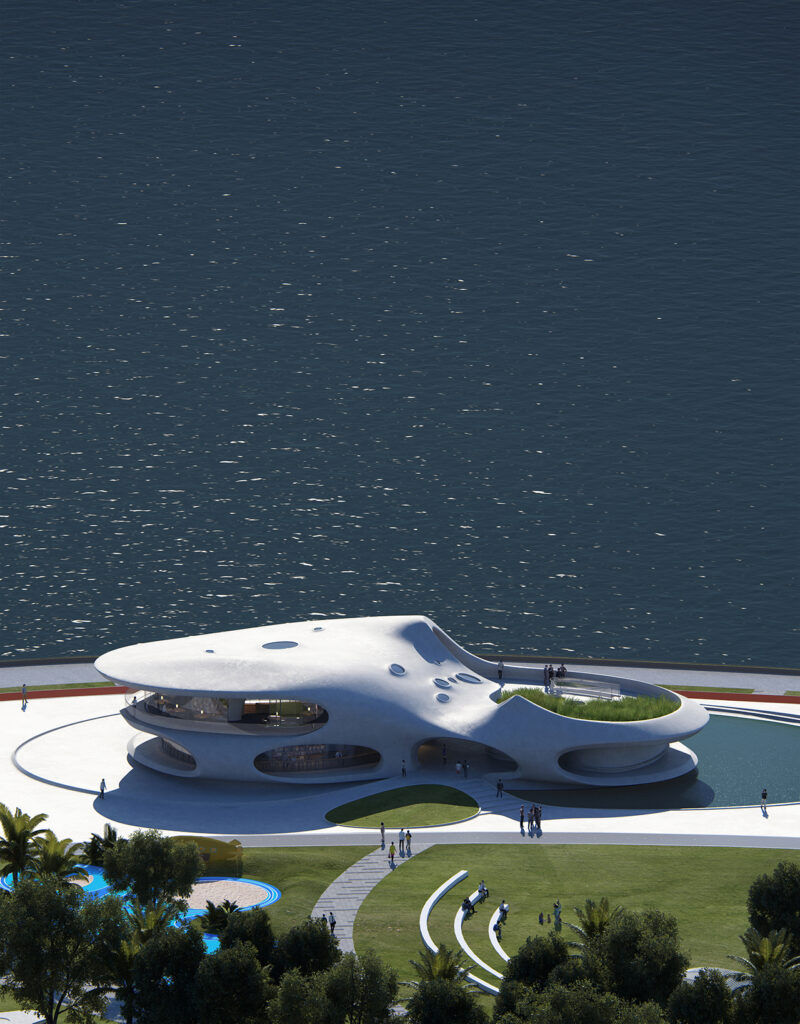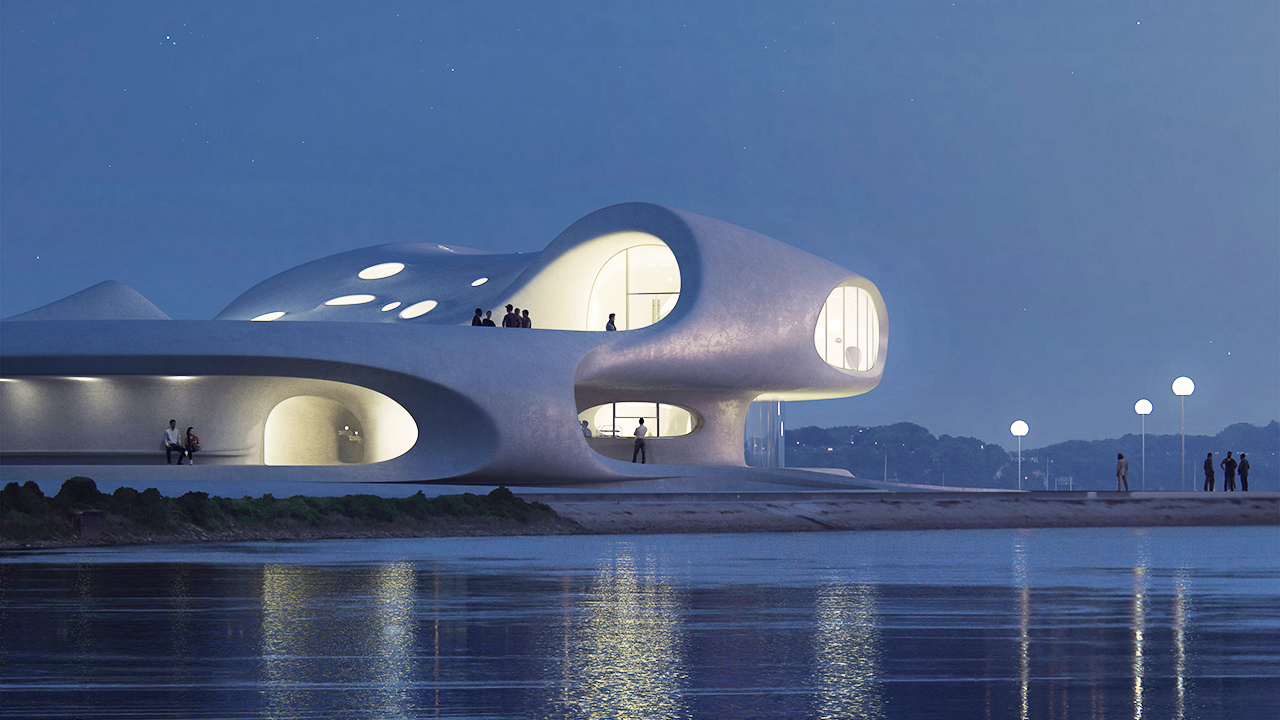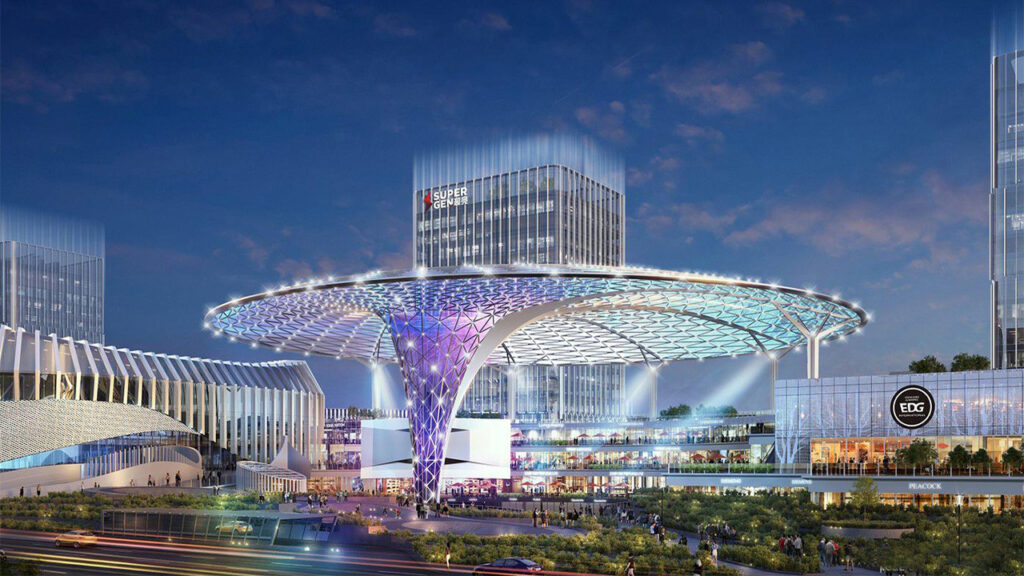Bilbao boasts Frank Gehry’s Guggenheim, Abu Dhabi a Louvre, Shanghai its Pompidou, and by the end of 2021, Haikou will have Pavilions by the Seaside.
If you’re unacquainted with the capital of Hainan, China’s tropical island province, that’s precisely why the city’s tourism and culture authorities are lavishing funding on 16 cultural pavilions dotted along 32km of its coastline.
Over the past two decades, urban planners have latched onto what might be termed the “Guggenheim phenomenon,” a belief based on the spectacular success of Bilbao that high-profile cultural projects can regenerate former industrial centers and lure art-lovers to new destinations.
In some regards, Haikou doesn’t lack recognition: it boasts a both free trade zone and a free port zone that draw staggering investment, and its balmy climate, natural offerings, and duty free shopping have long made it a go-to getaway for sun-hungry Mainland tourists. In 2020, China’s southernmost province welcomed just shy of 65 million tourists, a mere 22 percent year-on-year drop after months of severely restricted travel. A slashing of duty free regulations compensated for this deficit by pushing spending up 127 percent and past the $5 billion mark.
But sandy beaches, plush resorts, and sprawling shopping mall complexes are insufficient for a diversified tourism economy. Pavilions by the Seaside aims to expand Haikou’s portfolio by becoming what the local government labels the “cultural landmark” for a city striving to become a dominant free trade port by the middle of the 21st century. Headed by curator Weng Ling, an extremely well-connected player in China’s cultural landscape, the development’s 16 publicly accessible pavilions are permanent, and will play host to cultural events and arts exhibitions.

In addition to the nine pavilions in Jiangdong New Area, seven projects are set to dot the coastline of Haikou Bay. Image: Pavilions by the Seaside, Haikou
No expense has been spared in achieving these ends. The roll call of commissioned architects reads like a who’s who in commercial architecture over the past decade, and includes Bjarke Ingels, Thomas Heatherwick (of New York Vessel fame/infamy), Patrik Schumacher of Zaha Hadid Architects, Kengo Kumato, and Ma Yansong of MAD Architects, to name but five.
“Haikou took the initiative to engage us to build a cultural landmark reflecting the city’s future as an international destination,” Weng tells Jing Culture & Commerce via email. “The pavilions will be like a flowing art space integrating new ideas into the local area to create a long-term ongoing dialogue with the people.”


Above: A view from the roof of Sou Fujimoto’s pavilion “Sky Mountain,” artist’s impression. Image: Pavilions by the Seaside, Haikou / Below: Ma Yansong’s Yundong Library. Image: SAN / Pavilions by the Seaside, Haikou
Weng points to the seasonally changed pavilion at the Serpentine Galleries in London’s Kensington Gardens and the Coeda house, which perches on a cliff overlooking the Pacific Ocean in Shizuoka, Japan, as projects that inspire. Both showcase high-concept but accessible architecture, are well-integrated with the natural environment, and have become international attractions.
While the sudden appearance of vast, sleek edifices along a seafront that was relatively pristine a matter of years ago may seem at odds with environmental protection, the project is keen to state its commitment to preserving both the surrounding marine ecosystem and local culture. From the project’s outset, discussions with the local government have centered on sustainability with each architect tasked with adapting their own signature aesthetics to the specific local landscape.
As Haikou continues a period of rapid urbanization and development, the pavilions strive to emphasize the interdependent relationship between man and nature — a point Weng feels has been poignantly clarified by the disruptions of the pandemic over the past year. “We have paid close attention to the harmonious coexistence of people and nature within the city. We hope to guide people to love nature, to return to nature and find connections between nature and art.”
The vision of locals finding their “leisurely walk by the ocean,” as Weng puts it, enriched by the project is easy to see. The extent to which Pavilions by the Seaside will land Haikou on the globe’s cultural radar is harder to predict. For every Bilbao, there’s an Ordos. Where’s that you ask? My point exactly.




